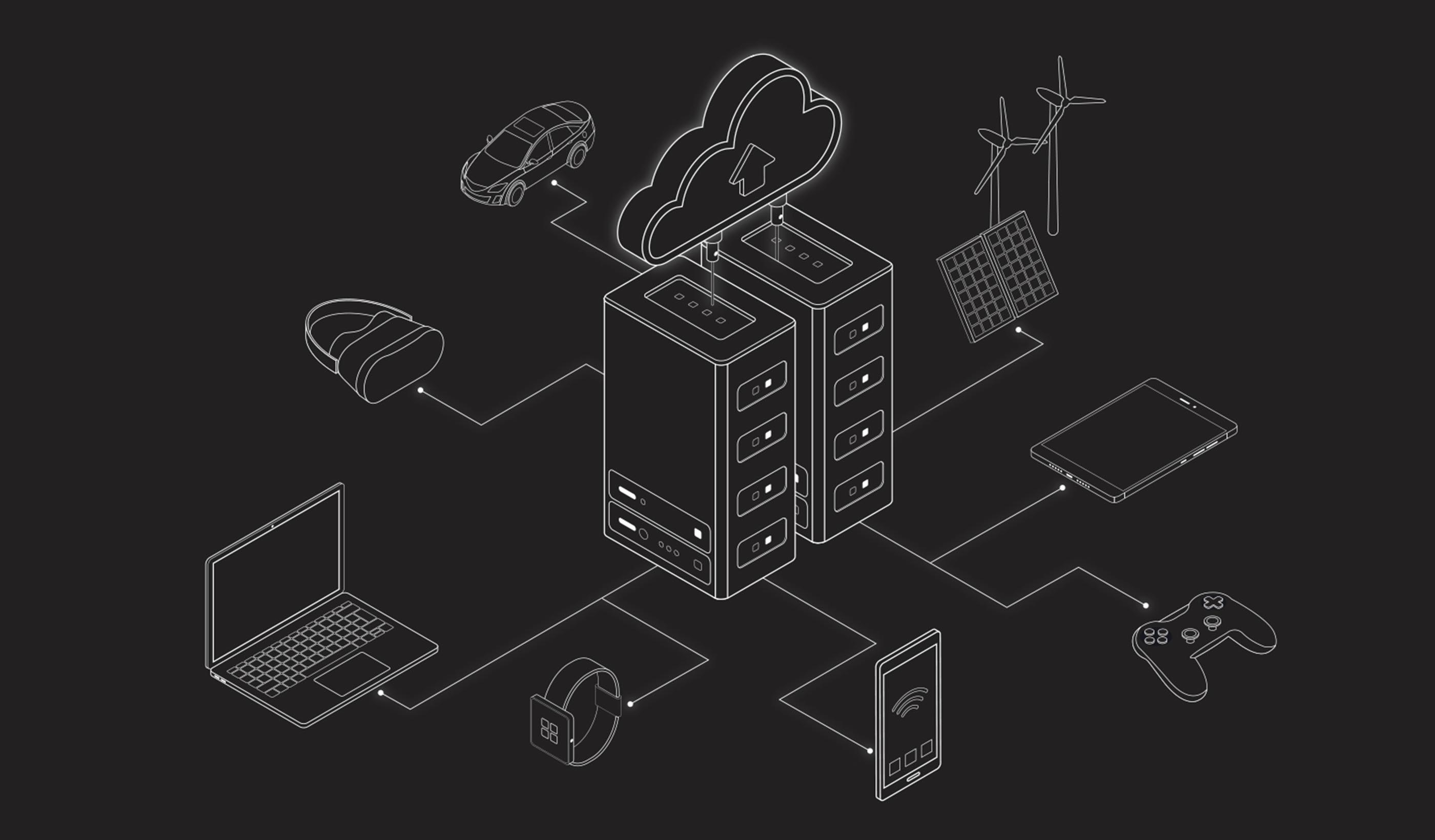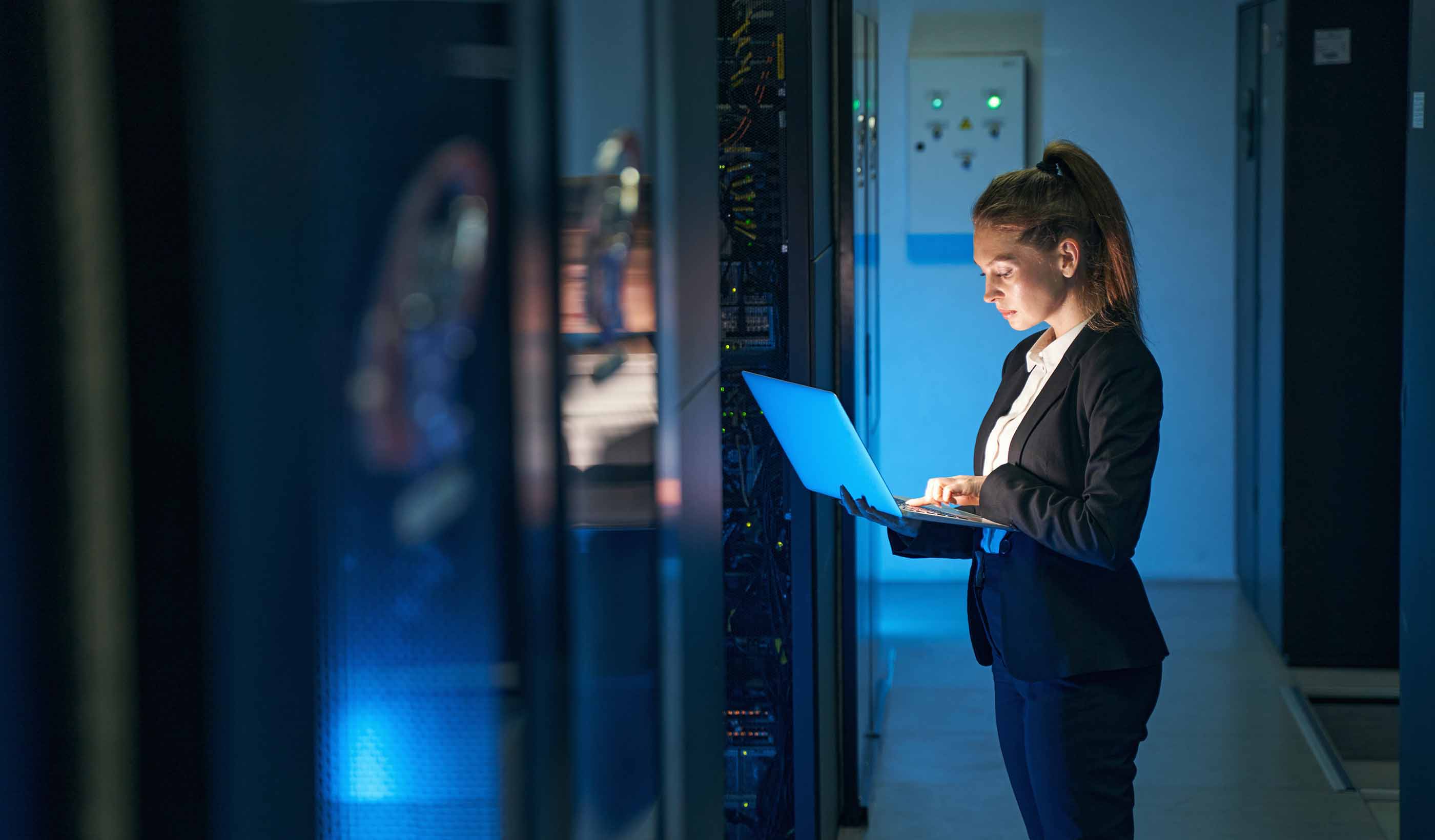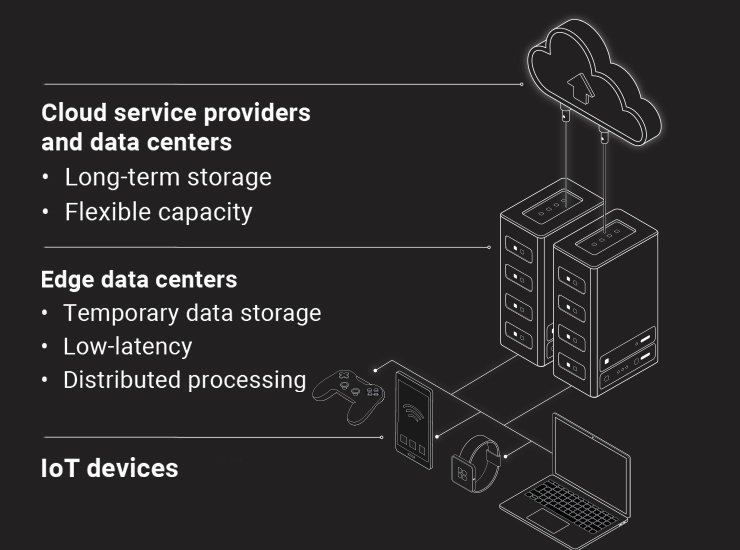Edge data centers can speed your online experience
March 19, 2024
March 19, 2024
The next generation of applications will crave distributed, low-latency networks
This article first appeared in Design Quarterly Issue 20 as “Prepare to embrace edge computing.”
If you’re streaming Netflix or Disney+ in the American Midwest, chances are good that your device accesses that data close to home.
Your iPad is not bouncing a request all the way to Silicon Valley or the East Coast to retrieve your new Marvel movie. There’s a regional data center nearby that serves you and your device. Offering mirrored data for streamers isn’t edge computing, but the use of regional data centers shows us the benefit of moving popular data closer to the user and reducing access to long-haul networks. There’s no lag. Proximity to data at its source, that’s the big idea around edge computing and edge data centers.
Cloud computing centralizes data processing. And edge computing distributes that processing. It places computing power on the edge of the network. Small (ranging from 2 to 10 megawatts) localized edge data centers process data closer to where it’s generated rather than immediately sending it out to a huge central cloud server. Edge data centers may also serve as intermediate and temporary storage.

Edge computing processes data closer to its source, reducing latency—the time it takes to send, analyze, and return large amounts of data.
We see edge computing in use right now. For example, a local healthcare facility stores medical imagery in its own edge computing facility. Then it archives the material to a central data center (or cloud provider) later. Edge computing is poised for wider acceptance.
The demand for edge data centers is booming. It’s driven by an increasing appetite for data, bandwidth, and speed from users, their apps, and connected devices. The Internet of Things (IoT)—in buildings, factories, homes, etc.—generates lots of data. Cloud computing infrastructure can’t keep up with it all. If we could handle and use the IoT data closer to where it’s generated, we can speed up response times and reduce the load on the cloud network data center. Our mobile devices connecting to 5G networks for video and audio streaming, bite-sized video content viewing, and rideshare hailing are adding to the volume of data.
And then there’s artificial intelligence (AI). The dawn of generative AI (ChatGPT, Bard, etc.) will drive the need for more computing power and bandwidth. Edge data centers can help provide for the speed and bandwidth that new AI apps require to perform. Every millisecond will count in the years ahead.
Along with IoT and AI, augmented reality, telemedicine, and analytics all benefit from low latency. Speed matters. Reducing latency and improving performance will drive the demand for these edge data centers.
We are designers of data centers and mission-critical facilities. As such, we are keeping a close eye on edge computing and its applications.

By filtering and redirecting data to nearby data centers, edge computing can reduce traffic.
Edge data centers can help provide for the speed and bandwidth that new AI apps require to perform. Every millisecond will count in the years ahead.
Edge computing distributes the processing tasks to local devices or edge nodes, which are located near the data sources. This permits low-latency processing, which makes for quick response in the short term. Later, the data can be archived at a distant facility, if needed.
When edge computing’s low latency meets 5G wireless connectivity and high cellular speed, it becomes more powerful. The 5G makes autonomous drones, remote diagnoses, and smart city projects possible.
Edge data centers will be deployed as standalone facilities, on-site at enterprise locations, near cell towers, or local distribution points known as “headends.” Edge computing can take place on devices or a few racks of servers. A department store can rent a storage space in the back to a content provider that shares advertising, augmented reality, and more to users in a shopping mall through a small edge center.
Unoccupied legacy IT rooms from the pre-cloud days are ripe for repurposing as edge data centers in commercial buildings. In general, these centers don’t need to occupy prime real estate. Often, a disused storage room or some extra parking spaces in a building basement are excellent edge candidates.
Edge computing solutions show great promise in certain applications. Here are some settings where we may see edge computing take hold.
Stadiums: Today’s fan experience is interactive, it’s social, and it’s data hungry. It’s not unusual for 40,000 fans to snap photos or stream video of Taylor Swift or Lionel Messi and share them on social media at any moment. Edge computing’s onsite data processing can enhance that fan experience with content delivery networks. Edge computing is already making inroads at stadiums around the world. Expect these venues to be the test beds for edge innovation.

Edge data centers will be deployed as standalone facilities, on-site at enterprise locations, near cell towers, or local distribution points known.
Entertainment districts and retail: When we’re walking through an entertainment district with restaurants, shopping, and entertainment venues, we’re often using our phones. By accessing the local wireless connection, we can get information in a pop-up ad or search for events, sales, and special offers. If we’re using the district’s edge network, it’s faster. Retailers are interested in using edge computing to enhance the on-site customer experience, processing sales, and maintaining inventory.
Autonomous vehicles: We don’t want an AV to rely on bouncing data from a server several states away. If a vehicle can access data closer to where it’s operating, it can make quicker real-time decisions. Edge computing can help provide the rapid response that AVs require.
Manufacturing: The increasingly automated factory will benefit from edge computing. It will allow manufacturers to get and process the data from their technologies faster and more securely. Edge computing is likely to make an impact in areas like monitoring and predictive maintenance, energy management, warehouse automation, and staff safety and security. The data collected by the edge computing-equipped factory can be harnessed for machine learning.
Agriculture: Today’s farming is automated and GPS-guided. To get the most out of crops and use their equipment more efficiently, farmers need to tap into better data. Edge computing could allow farmers to better utilize info on weather, crop planting, watering protocols, and equipment use. Is there space in the barn for a data center?
Banking and finance: Traders and asset managers crave the low latency data transmission trading that edge can provide.
The pandemic drove many of us to work from home and collaborate remotely. It enhanced the demand for cloud computing. Now, we’re seeing the pendulum swing in the other direction, with more people returning to the office. The need for low-latency, decentralized data processing will only build in the near future. That’s why we’re keeping an eye on edge computing.